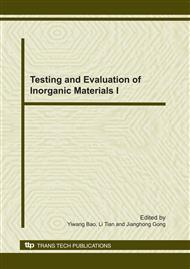p.636
p.640
p.643
p.647
p.651
p.657
p.660
p.665
p.669
Computational Simulation of the Joint Shape after as-Reflowed Soldering
Abstract:
Using the interactive software, this study was mainly focused on developing a 3-D joint shape after the as-reflowed soldering which is the one of chief factors affecting the reliability. From the results, the soldering process can be simulated and observed directly. By changing the various conditions and constraints, such as surface tension, wetting angle and specific gravity, it makes a comparison between the simulated result and the experimental one. The simulated parameters are based on those of the traditional eutectic Sn-Pb solder. After slicing and comparing the different profiles of the simulated shape, the 3-D simulated geometry fits well with the experimental one.
Info:
Periodical:
Pages:
651-656
Citation:
Online since:
December 2010
Authors:
Keywords:
Price:
Сopyright:
© 2011 Trans Tech Publications Ltd. All Rights Reserved
Share:
Citation:


